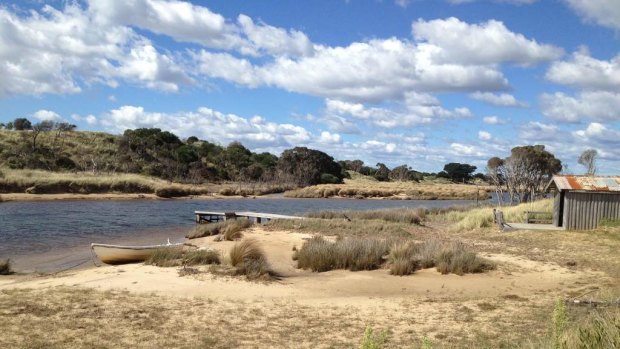
Dateline: Tasmania This was taken at Barnbougle Dunes Golf Course, Bridport, Tasmania. Surrounded by natural beauty in the heart of Australia's No. 1 public golf course was this understated rural oasis.Credit: Shayne Adam
Located 91 km north east from Launceston via the Tasman Highway, the attractive holiday town of Bridport is situated at the southern end of Anderson Bay. With a population of around 1000 (which expands dramatically in summer) it is in an area noted for its excellent sea and river fishing, its swimming and beach facilities, and its holiday atmosphere.
The first European to travel through the area was the surveyor Thomas Lewis who explored the district in 1830. The first settlers moved in the mid 1830s. These included Andrew and Janet Anderson (they arrived in 1833), who gave their name to Anderson Bay, and Peter Brewer (arrived 1835) who built the impressive 'Bowood'.
Today Bridport mixes tourism with fishing. Historically its tourism has been mainly caravanners but more recently guest house, holiday units and host farm accommodation have broadened the appeal of the town. It is also the centre of major scallop, trout (there is a freshwater trout farm) and lobster industries.
Things to see
Bowood
'Bowood', a fine Georgian stone, brick and pit-sawn timber dwelling, was built in 1838. Located 12 km north of the town, it is the oldest building in the district. It was built by an ex-convict carpenter and an American stonemason who had deserted from his sealing ship. The house is not open to the public.
Waterhouse
To the west of Bridport, surrounded by extensive sand dunes, is the near-ghost village of Waterhouse which had a brief moment of glory when gold was discovered their in 1869. At the time it boasted four hotels, a gold commissioner and police station. Off the coast is Waterhouse Island, complete with a lighthouse, which was named by Bass and Flinders in 1798.
Sign up for the Traveller Deals newsletter
Get exclusive travel deals delivered straight to your inbox. Sign up now.